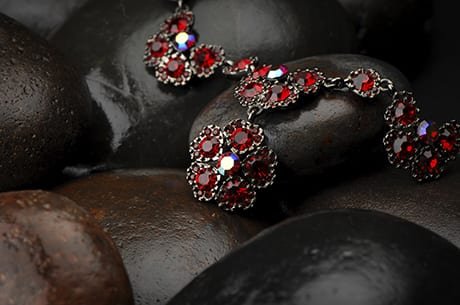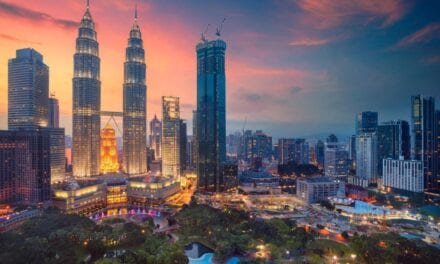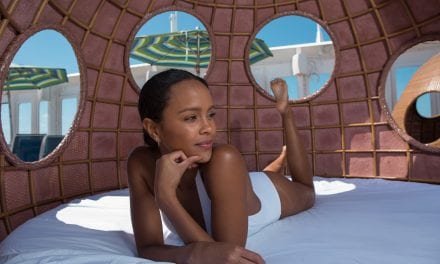By Maureen Santucci
Usually, when you’re traveling to a new country, you want to bring something back that is particular to that place. When you’re in Mexico, it’s silver and tequila. When you’re in Peru, it’s alpaca goods and pisco. In Myanmar, formerly known as Burma, the country is known for, amongst other things, its gems. In particular, the country is known for its rubies, sapphires and jade.
You can get your appetite whetted by visiting one of two Gems Museums. One is located conveniently in Yangon, one of the country’s main cities and the place most visitors fly into. Possibly too conveniently, it is located in the same building as the Gems Emporium, with more than 80 stores located within. If you’re feeling the need to take something home of your own, it will be all too easy to do so!
An even larger gems museum was opened up in 2009 in Nay Pyi Taw, the country’s new capital. Here, you’ll find the one of the world’s largest natural pearls, as well as a jade stone weighing 69 kg and the largest Myanmar ruby, weighing in at 21,450 karats. It also now houses the world’s largest sapphire, formerly at the Yangon museum, weighing almost 26 lbs. (63,000 karats).
There have been economic sanctions in the past due to allegations of human rights abuses. Many of these have been lifted, however. Export permits, however, can still be an issue. For this reason, it may be worth it to purchase at authorized government-run shops, despite higher prices. There are also government-run auctions twice yearly which can offer better deals.
If gem stones don’t speak to you, there are many other items that are quintessentially Burmese. For example, there are woven textiles with traditional patterns in silk and/or lotus thread (from the lotus plant). Among the many items that are made from this cloth are the longyi, or traditional Myanmar skirts, worn by both men and women. These are great to have handy for throwing on in warm weather, allowing you to be cool and comfortable, as well as stylish.
A great conversation item is the native made cheroot. This type of cigar, one that has both of its ends clipped, has its origins in this part of the globe but the contents have changed quite a bit as it made its way throughout the world. Here in Myanmar, then can be made with a variety of fillings, greatly changing the resultant taste.
Inle Lake is the perfect place to take a tour of a cheroot factory, and to pick yourself up some varieties to take home, not to mention score some great photos of the grandmothers who smoke them. While here, you can also take a tour to learn about how the local ladies make paper, and then use it to make lanterns, umbrellas and more. The hand painted umbrellas make particularly lovely gifts for friends and family members, or to display in your home as a colorful reminder of your trip.
A more unusual specialty are the marionette puppets. These represent a traditional form of entertainment and were not restricted to children’s tales by any means. Shows using these style puppets can be seen in Yangon at the National Museum as well as in Mandalay at the Mandalay Marionettes Theater.
Tapestries and lacquerware are also items that Myanmar is known for. The lacquerware is hand carved from teak and often features scenes from the life of Buddha.
Speaking of Buddha, the country is primarily Buddhist and features so many temples, also known as pagodas, that visitors here often speak of getting “pagoda fever” due to the ubiquitous sight everywhere one travels.
That notwithstanding, or perhaps exactly because of that, a souvenir that relates to Buddhism, such as a bell, gong or a figure of the Buddha in stone, pottery or bronze may be the perfect item to take home. Do be careful of anyone trying to sell you any so-called ancient pieces. At best case, you may end up paying for something that is not as unique as promised. At worst, you may end up with something that is confiscated at customs as true antiques are forbidden to be taken out of the country.
A final word about prices – it’s not unusual for tourists to get charged a bit more than locals are. Bear in mind that a $1 here means a lot more than it does back home so go ahead and bargain but try not to drive such a hard one that the resultant prices isn’t fair for both of you.
Maureen Santucci, originally from the U.S., has made Peru her home for the past 5 years. She writes for Fodor’s Travel Guide as well as various travel blogs when she isn’t escaping off to the mountains to hike, teaching Tai Chi, or treating patients in her acupuncture clinic.
If you would like to submit a guest post on food, wine or travel to Where and What in the World, I would be happy to feature your travel experience , drink, special wine tasting, or family or simply delicious recipe. If you go to submission tab, you will see how to submit, as well as have the opportunity of telling me if you would like to would like to be a regular contributor. When uploading a file for submission, you are also able to upload jpgs. Please feel free to put a last paragraph about you and a link to your profile. No html please. You can also include a head shot.

















